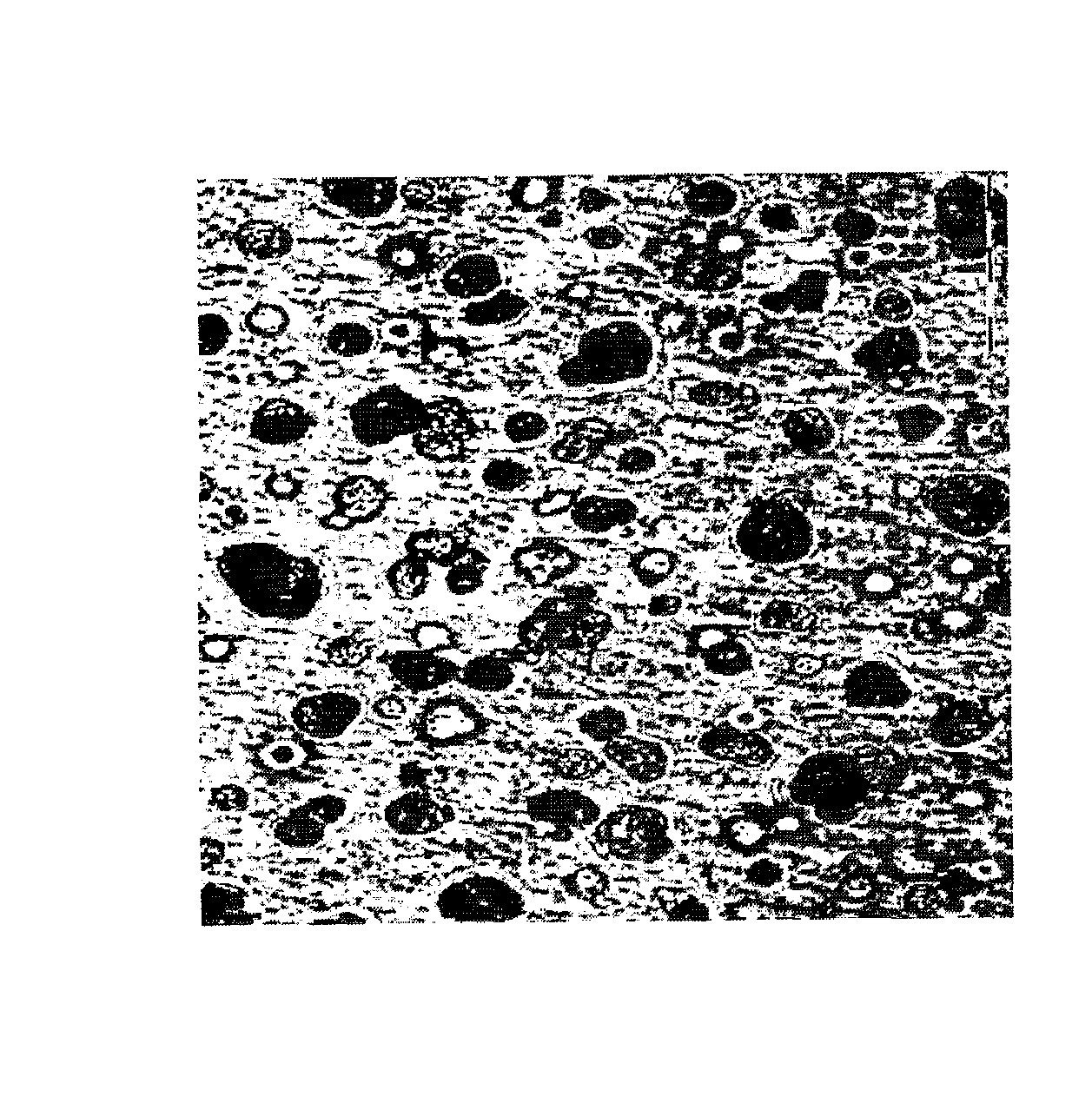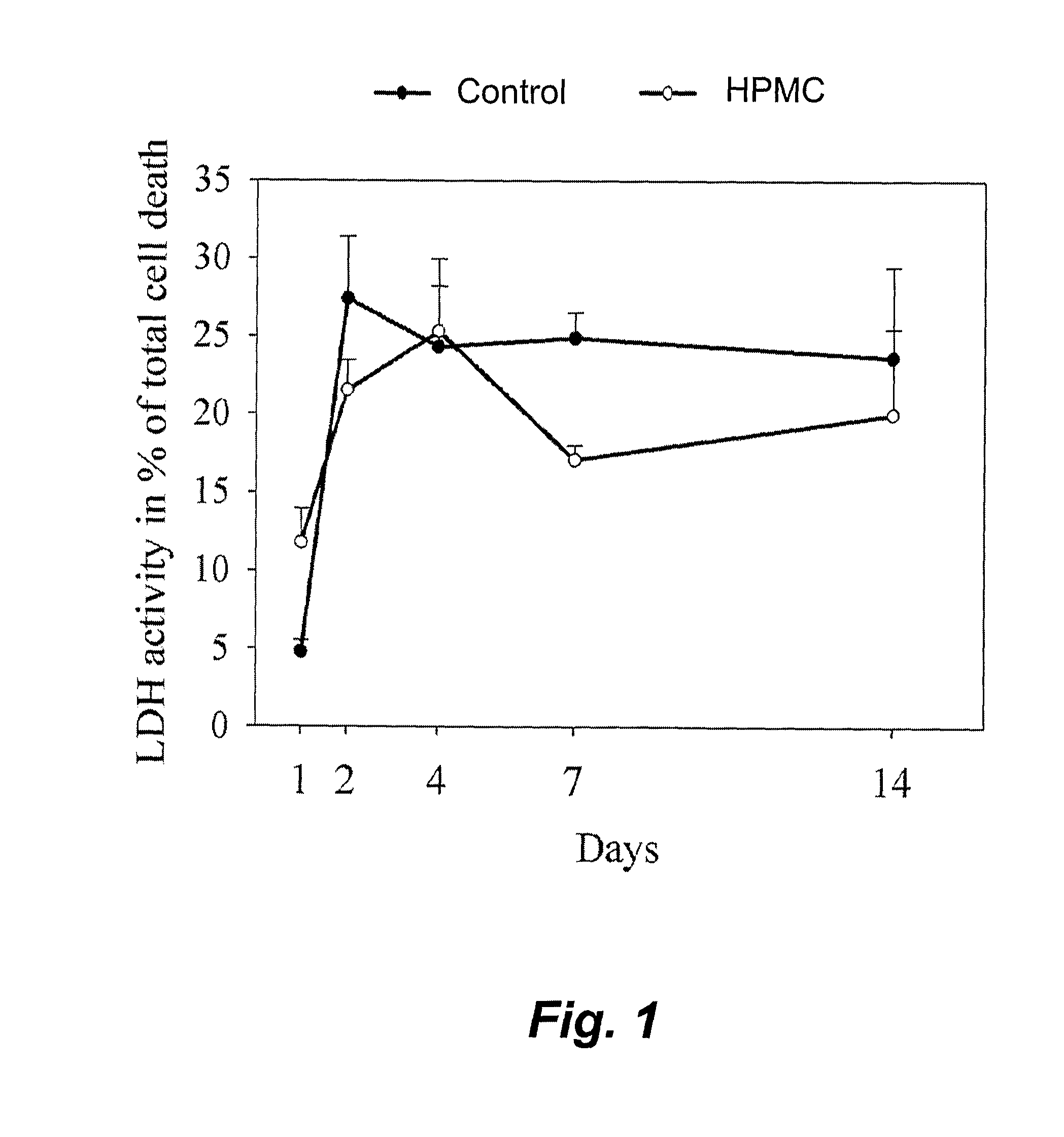Method and means for culturing osteoblastic cells
a technology of osteoblastic cells and methods, applied in the direction of skeletal/connective tissue cells, biocide, plant growth regulators, etc., can solve the problems of osteoporotic bones being more prone to fracture, low integration, and unable to achieve three-dimensional (3d) structure without the requirement of other manipulation or serial culturing, etc., to achieve a reduced content of fibroblasts, increase the expansion rate, and enhance the expansion
- Summary
- Abstract
- Description
- Claims
- Application Information
AI Technical Summary
Benefits of technology
Problems solved by technology
Method used
Image
Examples
Embodiment Construction
[0038]Cell Cultures. The mouse osteoblastic cell line MC3T3-E1 (DSMZ, ACC210, Braunschweig, Germany) was cultured in alpha-MEM (PAA Laboratories GmbH, Austria) supplemented with 20% fetal calf serum (PAA Laboratories GmbH, Austria) and 1% penicillin / streptomycin (100 μg / mL penicillin and 100 μg / mL streptomycin). The cells were kept in an incubator at 37° C. in a humidified atmosphere (95% air and 5% CO2). The cells were sub-cultured twice a week at 80%-90% confluent using 0.25% trypsin containing 1 mM EDTA. Human mesenchymal stem cells (MSC; Cambrex Bio Science Walkersville Inc., MD, USA) were cultured in MSC basal medium (Cambrex Bio Science Walkersville Inc., MD, USA) supplemented with 200 mM L-glutamine (Cambrex Bio Science Walkersville Inc., MD, USA) and 1% penicillin / streptomycin (Cambrex Bio Science Walkersville Inc., MD, USA). The cells were sub-cultured at 80%-90% confluent using 0.25% trypsin containing 1 mM EDTA.
[0039]Experimental design. The cells were cultured in their r...
PUM
| Property | Measurement | Unit |
|---|---|---|
| diameter | aaaaa | aaaaa |
| diameter | aaaaa | aaaaa |
| average molecular weight | aaaaa | aaaaa |
Abstract
Description
Claims
Application Information
 Login to View More
Login to View More - R&D
- Intellectual Property
- Life Sciences
- Materials
- Tech Scout
- Unparalleled Data Quality
- Higher Quality Content
- 60% Fewer Hallucinations
Browse by: Latest US Patents, China's latest patents, Technical Efficacy Thesaurus, Application Domain, Technology Topic, Popular Technical Reports.
© 2025 PatSnap. All rights reserved.Legal|Privacy policy|Modern Slavery Act Transparency Statement|Sitemap|About US| Contact US: help@patsnap.com



